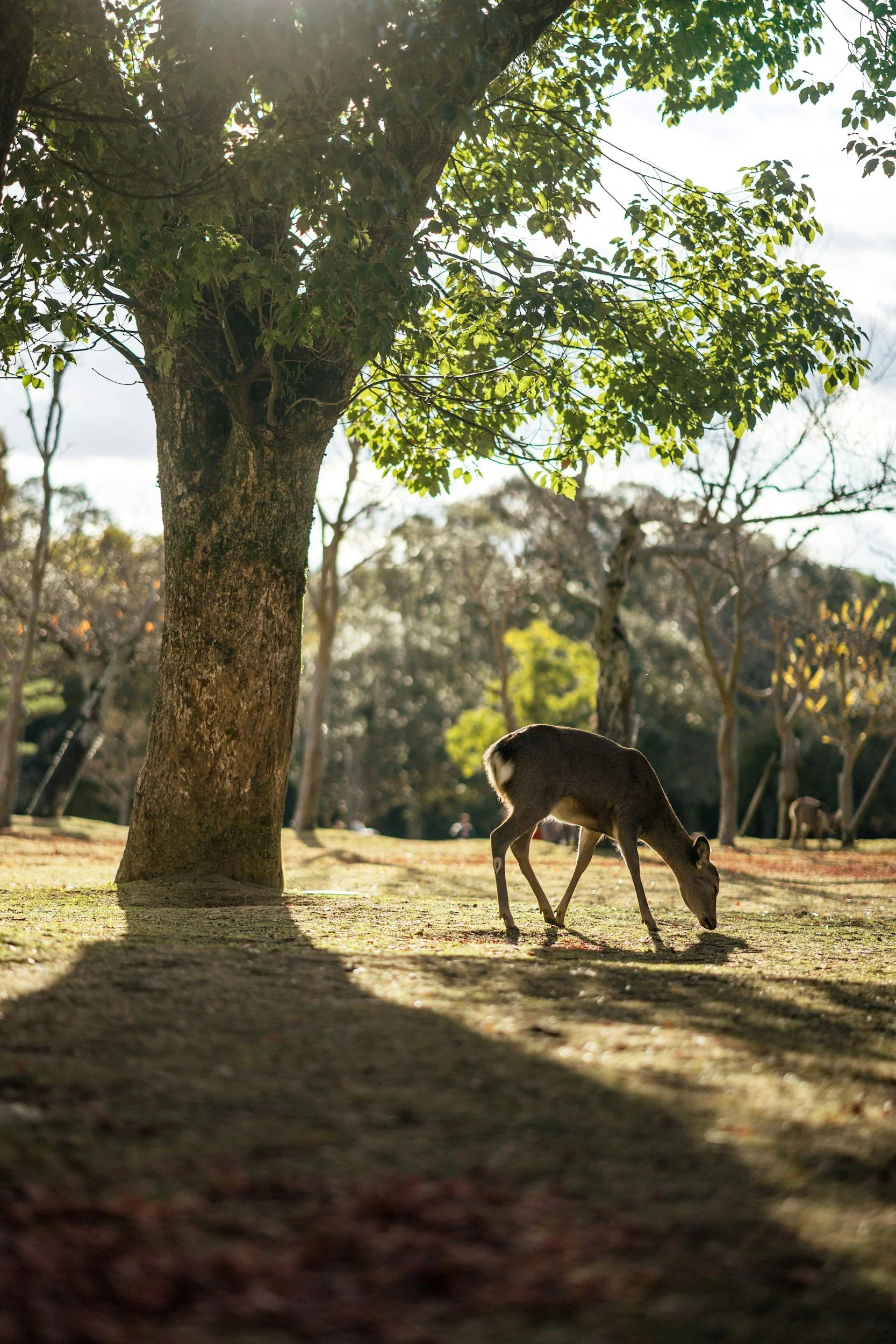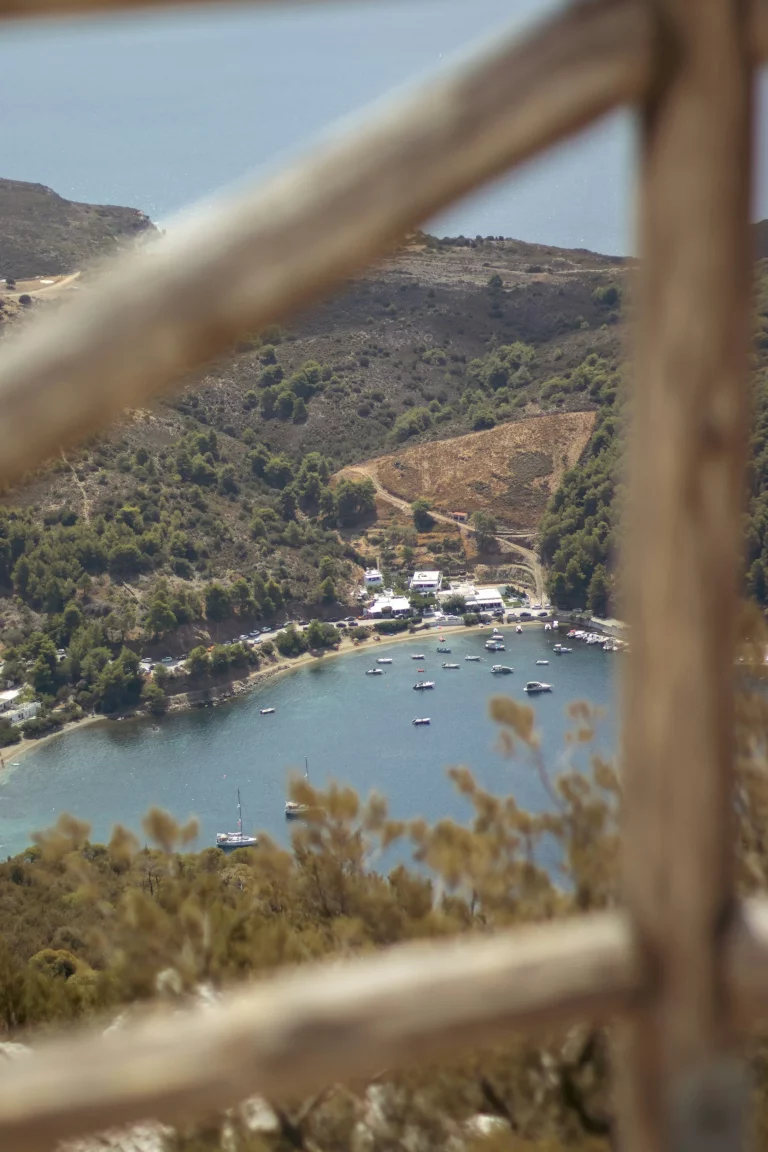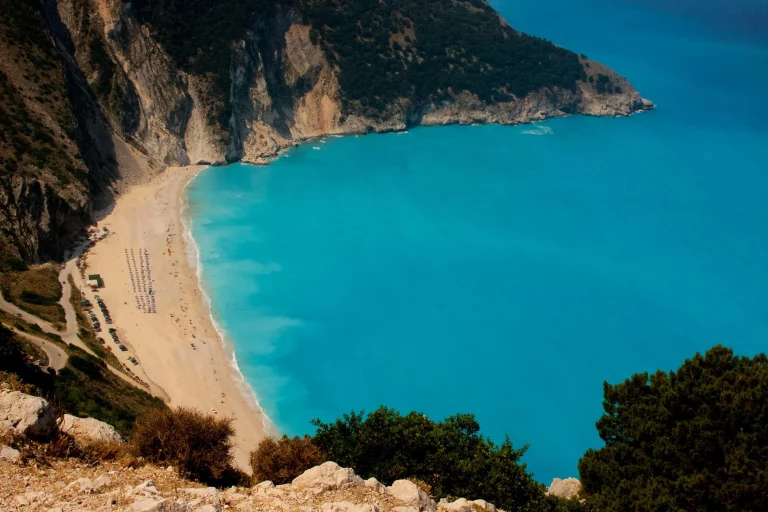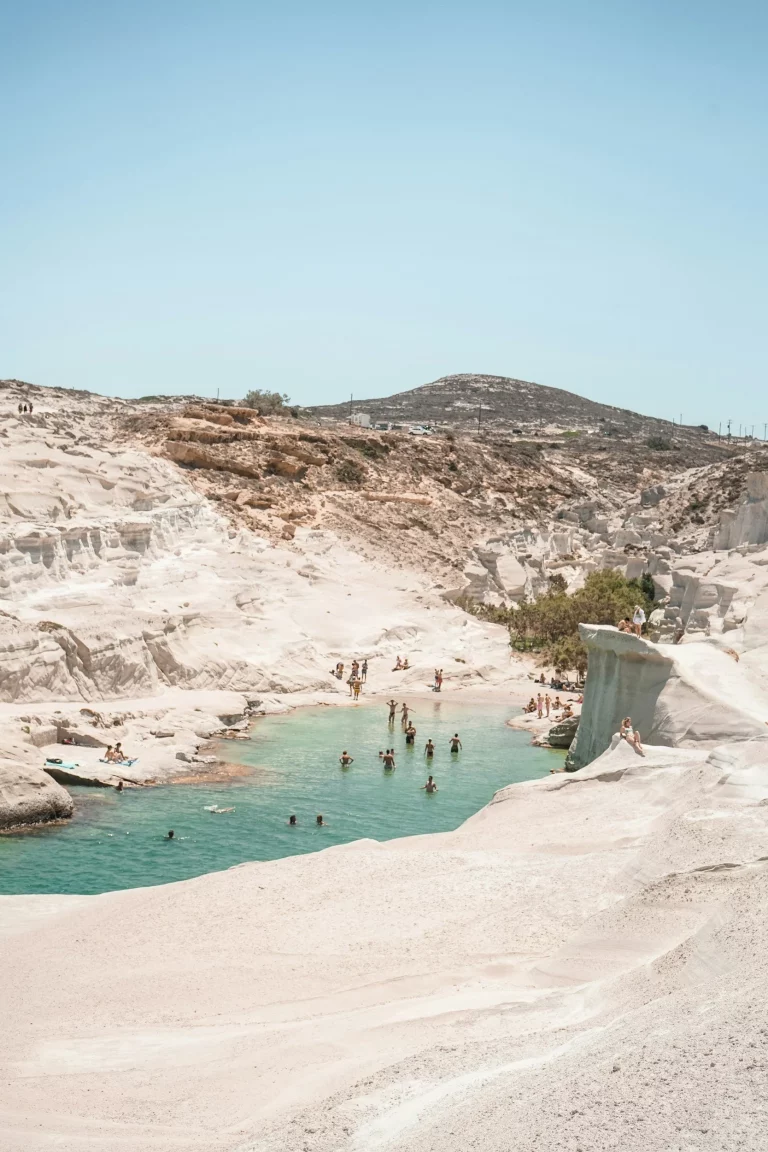The Perfect Nara Day Trip from Osaka or Kyoto
Nara
If you’ve even briefly explored the idea of planning a trip to Japan, chances are Nara has crossed your radar as a must-visit destination. Once Japan’s first permanent capital from 710 to 794, Nara offers a magical mix of ancient history, cultural charm, and modern allure.
Surrounded by several divine mountain ranges that shape the city and prefecture’s cultural and national significance, Nara is a haven of natural beauty and spiritual significance, not just for locals but for Japan as a whole. Its status as Japan’s first permanent capital from 710 to 794 established it as the cradle of Japanese civilization, where Buddhism flourished, and enduring traditions took root.
However, the capital was eventually moved away to Nagaoka and later Kyoto, partly due to concerns over the overwhelming influence of Nara’s powerful Buddhist institutions. The spiritual presence in Nara was so profound that it was believed to risk overshadowing imperial authority, leading to the establishment of new capitals elsewhere to maintain a balance of power. Despite this, Nara remains a centre of religious and historical importance, with its legacy deeply embedded in Japan’s cultural identity.

Nara’s identity today is easily most synonymous with the famous “deer of Nara”. The wild, Sika deer breed in Nara were already locals to the area in the 8th century when the Kasuga Taisha Shrine was founded, and to this day there are around 1,500 wild deer roaming freely throughout Nara park. These animals aren’t just fellow mammals living alongside locals and eager visitors, they’re revered as sacred animals in Nara, protected as national monuments and thought to be deeply intertwined with the gods.
While we were most eager to visit Nara to spend time with its ancient residents, our expectations were exceeded, making it difficult to leave Nara Park and the bewitching deer. But beyond the deer, Nara has a wealth of historical sites and cultural treasures that make it well worth exploring.
Just under an hour from both Osaka and Kyoto, a day trip to Nara is a must for any Japan itinerary. Home to 8 UNESCO World Heritage Sites, Nara is a treasure trove of cultural heritage, stunning temples, and iconic landmarks, all within easy reach of Japan’s major cities.
With our guide to spending one day in Nara, you’ll experience the city’s unique blend of history and modern charm, immersing yourself in both its ancient heritage and vibrant present.
Is a Day Trip Enough for Nara?
A day trip to Nara is definitely enough to experience the highlights of this beautiful city. While it’s impossible to see everything in a single day, you can still immerse yourself in Nara’s rich history by visiting iconic sites like Todai-ji Temple, Nara Park, and the Kasuga Taisha Shrine. You’ll also have time to explore the modern aspects of the city, from local cafés to shopping districts. With a well-planned itinerary, you can enjoy both the ancient heritage and vibrant present of Nara, making it an ideal day trip from Osaka or Kyoto.
When to Visit Nara
Spring is undeniably one of the best times to visit Japan, and Nara is no exception. During this season, the blushing Sakura (cherry blossoms) blanket Nara Park in soft pink and white hues, while the mild temperatures create the ideal setting for sightseeing and outdoor activities. However, with spring comes a price – hotel rates across Japan tend to rise, and the tourist crowds increase significantly.
Sakura season is also fleeting, lasting only a few weeks, and the timing of the full bloom can be quite unpredictable, often varying from year to year. To catch Nara’s cherry blossoms at their peak, it’s best to plan your visit in early to mid-April, but keep an eye on bloom forecasts for a more accurate prediction. Despite the crowds and higher costs, the fleeting beauty of the Sakura makes it an unforgettable experience.
Despite this, it’s entirely possible to find moments of tranquillity amidst the bustle, even during peak tourist season. We were fortunate to visit Nara in April and found that the beauty of spring made the experience unforgettable.
Fall and winter are also perfect seasons to visit Nara, offering a peaceful escape with fewer tourists and crisp, refreshing air that enhances the enjoyment of comforting Japanese classics. From mid-November to December, the city transforms into a vibrant canvas of red, orange, and golden-yellow Ginkgo leaves, creating a stunning contrast against the serene backdrop of the city’s ancient temples and ample parks.
Summer in Nara is a lively time, packed with traditional festivals that bring the city’s culture to life. The weather can be hot and humid, especially with heavy rains in June, but the vibrant festivals make it all worth it.

How to Get to Nara
Nara is conveniently serviced by two train stations, both called Nara, but served by different lines. Japan Railways (JR) serves one and Kintetsu serves the other, fortunately both stations are in proximity to Nara’s centre. Conveniently situated, these stations make Nara an ideal destination for visitors travelling from Osaka, Kyoto, and other nearby cities.
OSAKA TO NARA
When we visited Nara, our base was in Osaka, so we took the Yamatoji rapid train with JR to Nara. There are direct services from Osaka to Nara that run on timely 15 minute intervals, taking just around 45 minutes from Osaka Namba Station to JR Nara. This line is covered by the JR Pass, but if you’re buying an individual ticket, it’ll cost 800 yen (£4.20/€5)
Alternatively, you can take the less frequent, limited express Kintetsu train from Osaka Namba to Kintetsu Nara in just under 30 minutes. This line is not covered by the JR Pass and costs 1070 yen (£5.60/€6.70)
If you prefer to skip public transportation and take a guided tour, this tour is a great option. Start your day with a visit to Nara Park, where you can enjoy cherry blossoms and interact with the deer, and capture photos near the Ukimido Pavilion. In the afternoon, head to Yoshino Mountain, a cherry blossom paradise with over 30,000 trees and cultural landmarks like Kinpusen-ji Temple, offering a breathtaking landscape and a glimpse into Shugendo Buddhism.
KYOTO TO NARA
From Kyoto to Nara, you can take the JR Nara line from Kyoto Station to JR Nara, with trains every 30 minutes and 50 minute journeys. This line is covered by the JR Pass, but if you’re buying an individual ticket, it’ll cost 690 yen (£3.60/€4.30)
For the fastest train from Kyoto to Nara, the Kintetsu line will bring you to Kintetsu Nara in just 35 minutes, with a ticket cost of 1,110 yen (£5.80/€6.90). This line is not covered by the JR Pass.
If you’re travelling to Nara from Kyoto and prefer to forego public transportation and visit with an organised tour, this tour is a lovely option.
Where to Stay in Nara
While a day trip to Nara is the most feasible option for many visitors to the Kansai region, we wished we had booked at least one night in Nara to experience the city further into the night and the opportunity to wander its ancient streets in the early hours of the morning. In the case that you decide to stay overnight in Nara, there are a handful of wonderful accommodations to choose, from modern chains, to boutique hotels and ryokans (traditional Japanese inns).
These are our recommendations.
Hotel Tenpyo Naramachi (Cost: €) – Situated in the heart of Nara, Hotel Tenpyo Naramachi offers a peaceful retreat with stunning views of the tranquil Sarusawa Pond Park. The hotel masterfully blends the simplicity of Japanese minimalism and Zen aesthetics with modern comforts, creating a seamless fusion of tradition and contemporary luxury.
Nara Ryokan Annex Sweet Hotaru Gen (Cost: €€) – For those seeking an authentic ryokan experience with the added luxury of hot spring baths, Nara Ryokan Annex Sweet Hotaru Gen is an excellent choice. Just moments from Kintetsu Nara Station, it provides a serene setting and traditional Japanese hospitality.
FUFU Nara (Cost: €€€) – If you’re looking to indulge, FUFU Nara is the ultimate in luxury. This sophisticated retreat combines sleek, modern design with the timeless elegance of Japanese style. Guests can enjoy hot spring baths, exceptional dining at the in-house restaurant, and an unforgettable stay in a truly refined setting.
A Guide to One Day in Nara

If you’re planning a one-day trip to Nara, it’s best to arrive as early as possible, ideally before 10 AM, when the crowds start to gather.
Morning
Nara Park
Kick off your adventure at the iconic Nara Park, where you can enjoy the peaceful surroundings and meet the park’s famous deer before the crowds roll in. Conveniently located just a short walk from both train stations, it’s the ideal starting point for your day in Nara.
Established in 1880, Nara Park stretches across more than 660 hectares of peaceful woodland and is home to many of Nara’s most famous landmarks, including Todaiji Temple and Kasuga Taisha Shrine. As you wander through its scenic grounds, you’ll soon meet the park’s beloved deer. If they seem occupied with other visitors at first, don’t worry — there are plenty more roaming around, and making new friends is easy.
The deer in Nara Park are charming creatures, known for their polite behaviour that mirrors Japan’s renowned courtesy. In fact, many will bow to you in return! Vendors scattered throughout the park sell special “deer crackers” (shika senbei) at a small cost, perfect for feeding your new companions — but remember, stick to the crackers, as feeding them anything else can be harmful.
While the deer are typically friendly, they are still wild animals. Some may get a little pushy if they suspect you’re holding back food. If you don’t have any crackers, simply raise your hands to show them, and they’ll usually move along. And if you’re ever unsure, the helpful signs around the park provide useful tips on interacting safely with the deer.


Salon Naramachi
Less than a five-minute walk from Nakatanidou, Salon Naramachi is a charming, traditional tea salon housed in a beautifully preserved Machiya merchant house. Here, you can savour an authentic Japanese tea experience with some of the purest matcha you’ll ever taste, perfect for a quick energy boost before continuing your day in Nara.
Salon Naramachi also offers a deeper dive into Japan’s tea culture with tea ceremony lessons and workshops where you can learn to make tea utensils, along with neighbouring design and household decor store, Nakagawa Masashichi.



Afternoon

Where to Eat in Nara
After a day of exploring Nara, you’ll probably be ready to refuel, and the city doesn’t disappoint. Nara has earned a reputation as a culinary destination, even gaining recognition from the Michelin Guide. Whether you’re a meat lover or on the hunt for standout vegetarian dishes, you’ll be hard-pressed not to find a dish to impress.

Mentoan
Alternatively, head back into central Nara for a comforting bowl of udon at Mentoan, a hidden gem celebrated for its creative presentation and warm, welcoming atmosphere. This small, cosy restaurant is known for its inventive takes on traditional Japanese dishes, with the standout being their thick, chewy udon noodles tucked inside a crispy, heart-shaped fried tofu pouch, all submerged in a rich, savoury broth. The combination of textures, from the silky noodles to the crispy tofu, creates a satisfying and unique dining experience. Mentoan’s attention to detail in both flavour and presentation makes it a must-visit for anyone craving a memorable, hearty meal in Nara.
30-1 Hashimotocho, Nara, 630-8217

Evening
As day turns into night, Nara beautifully transforms into an illuminated work of art, making it completely worth it to stretch your day in the ancient capital into sunset. Depending on the line you’re taking back to your base city, trains run until around 10-11 PM from Nara, so you don’t need to worry about missing the train.



This post contains affiliate links. If you book through them, we may earn a small commission, which helps keep our content free.








